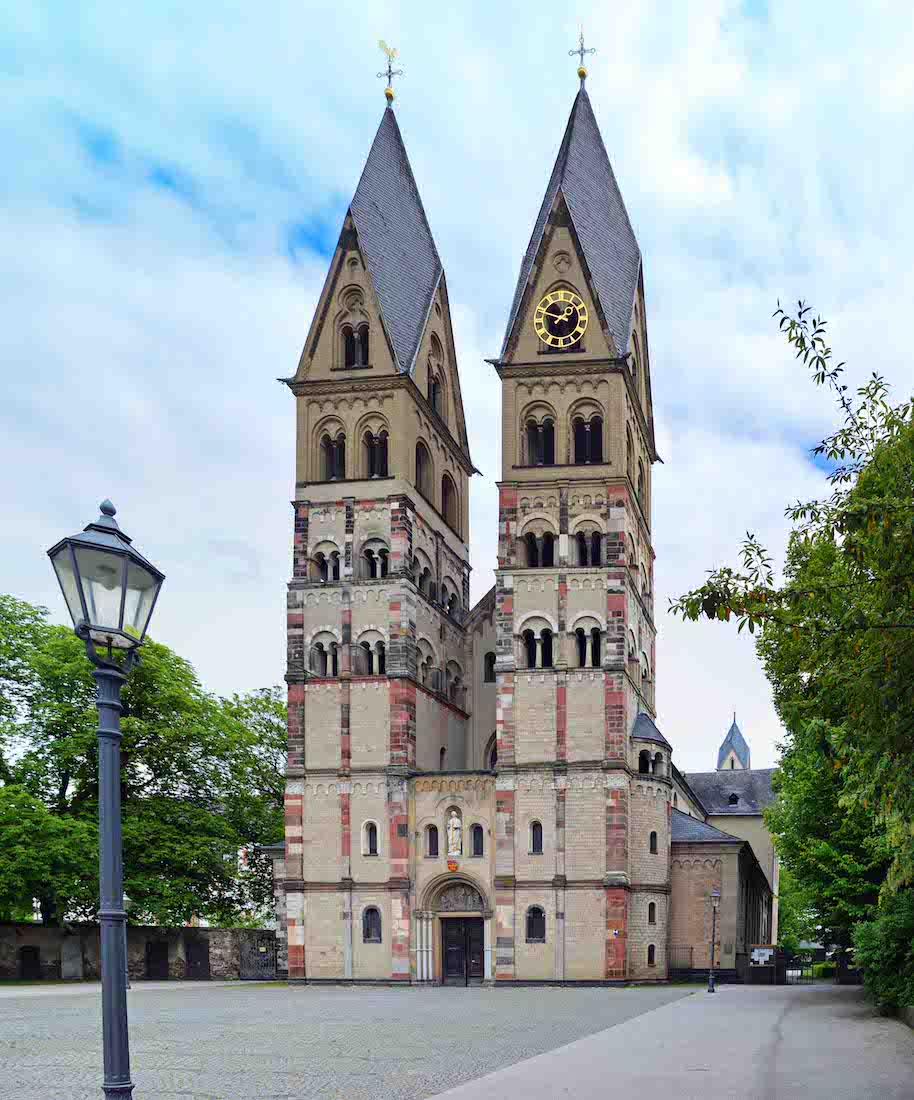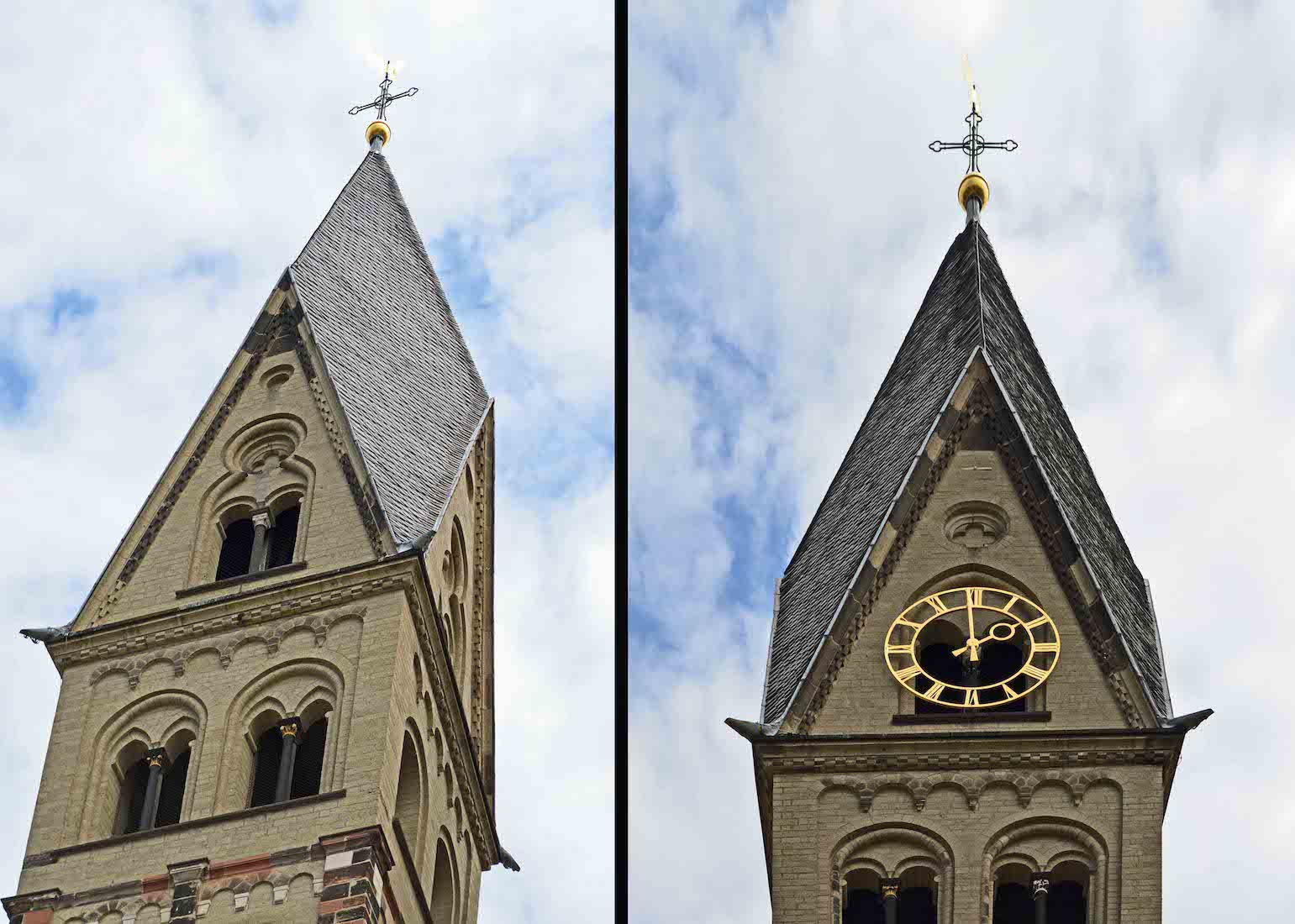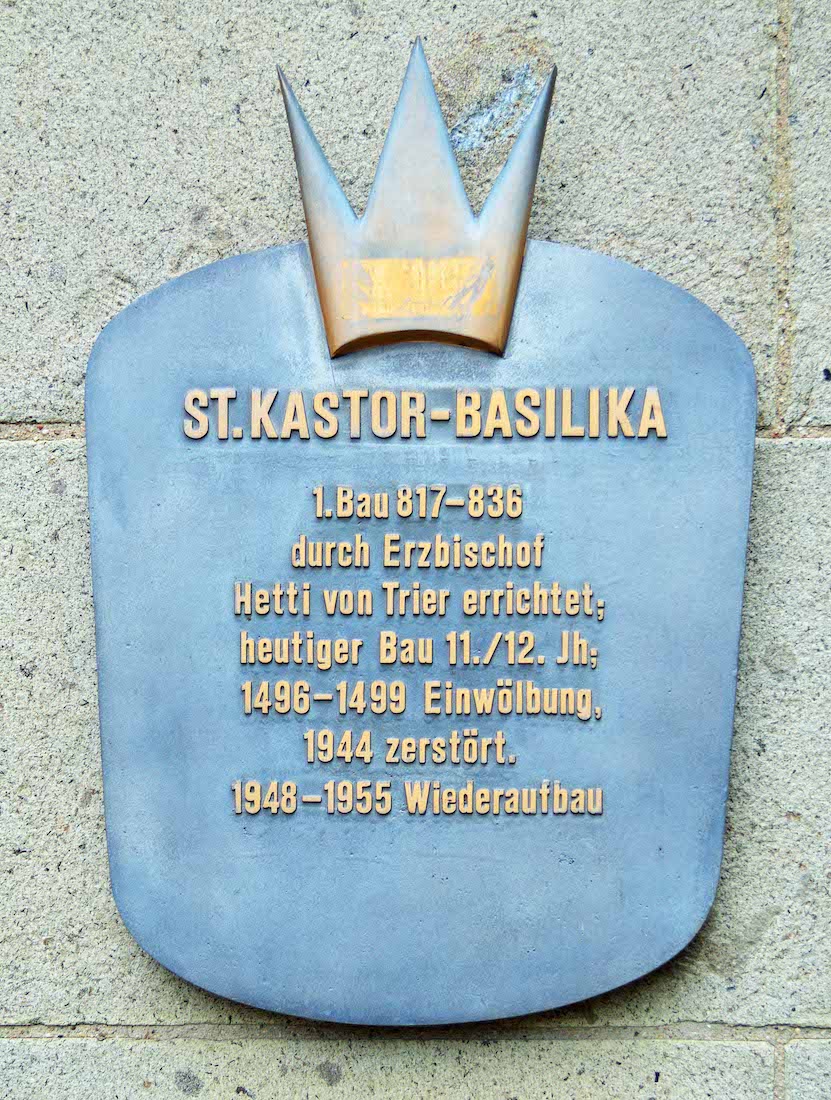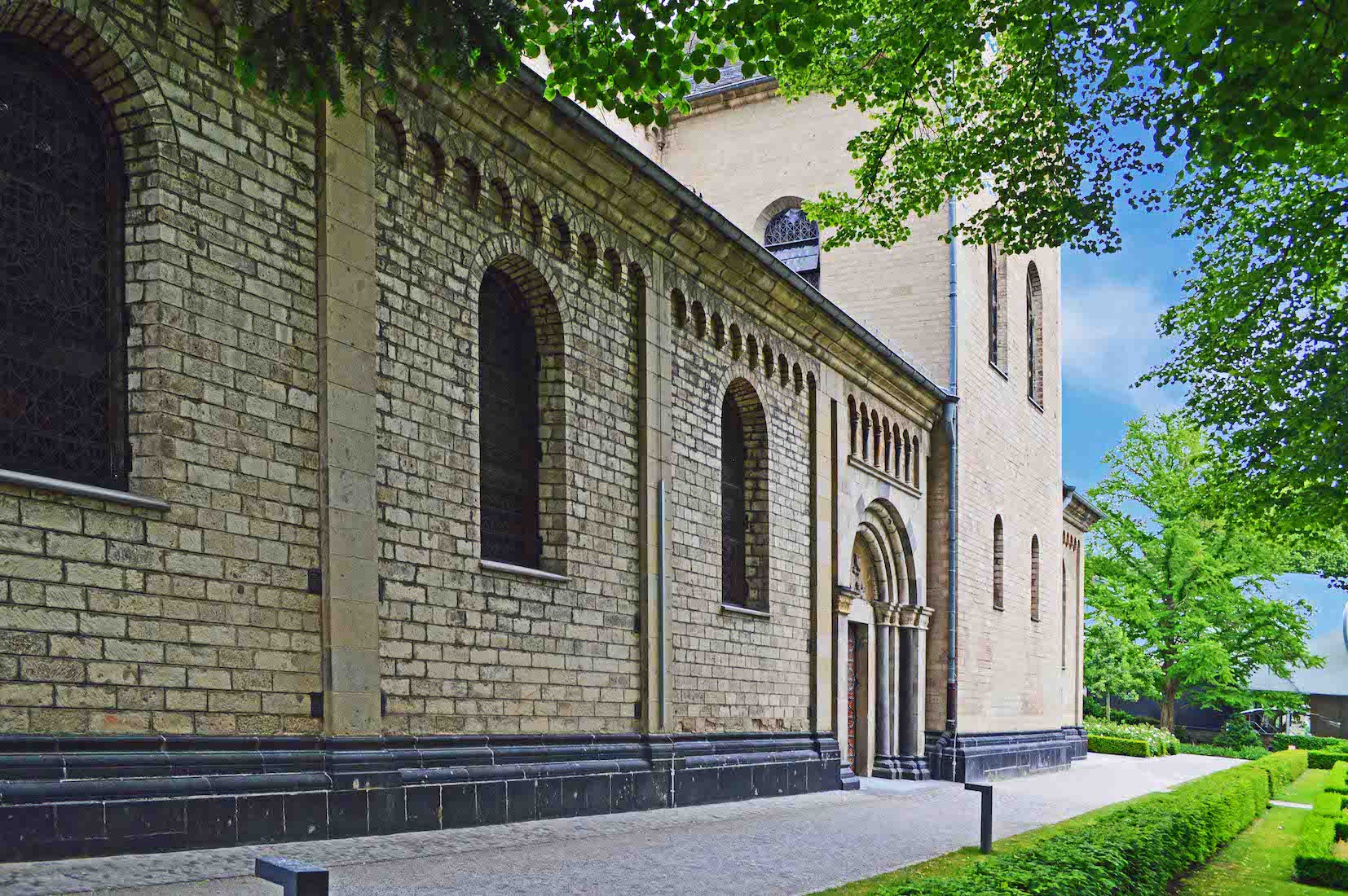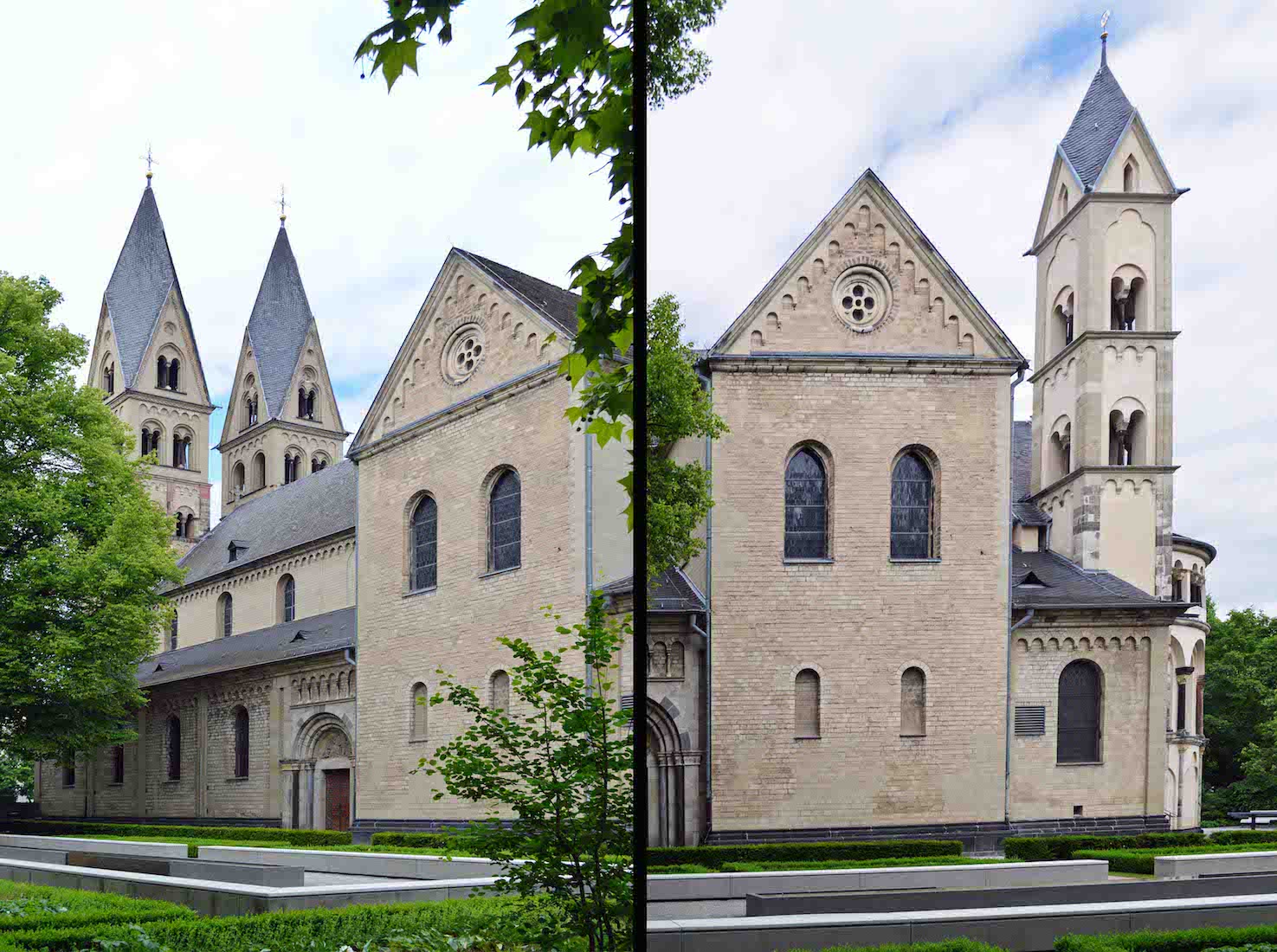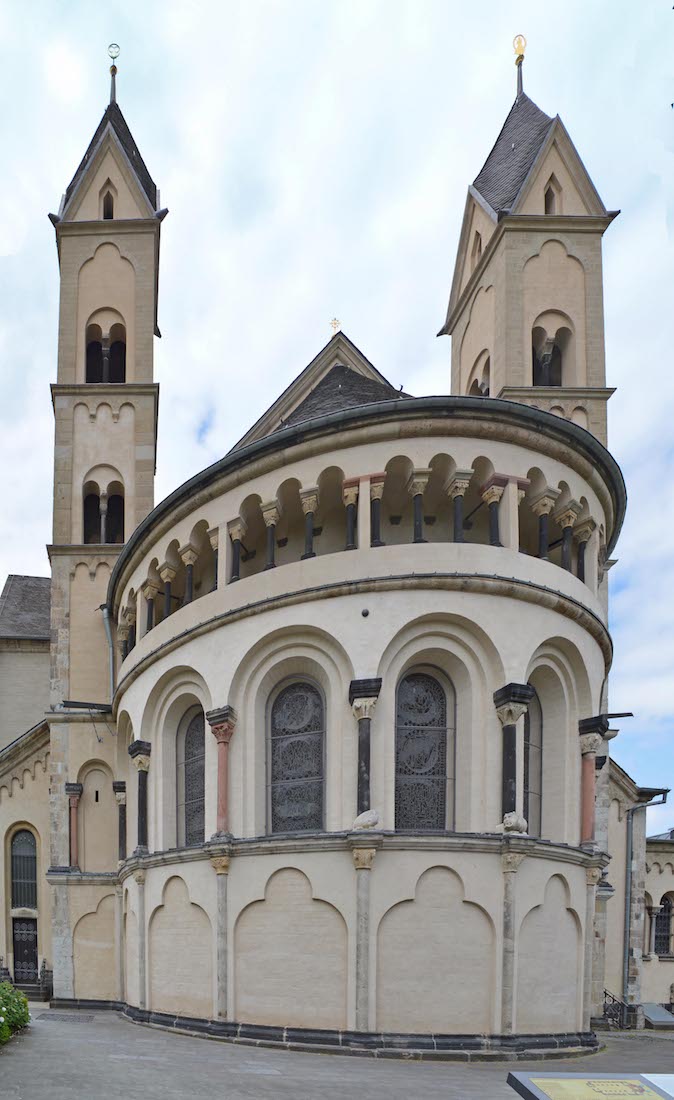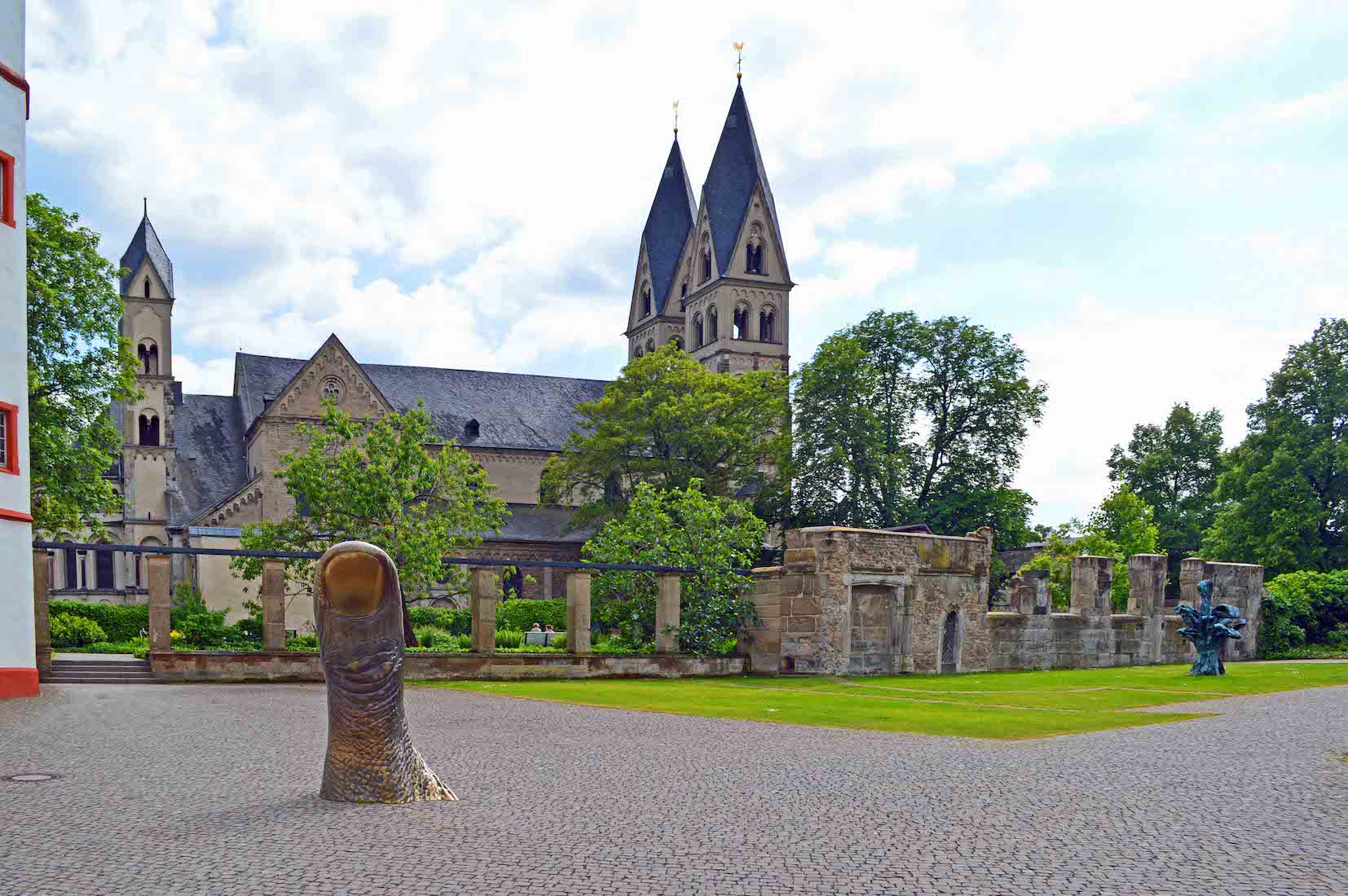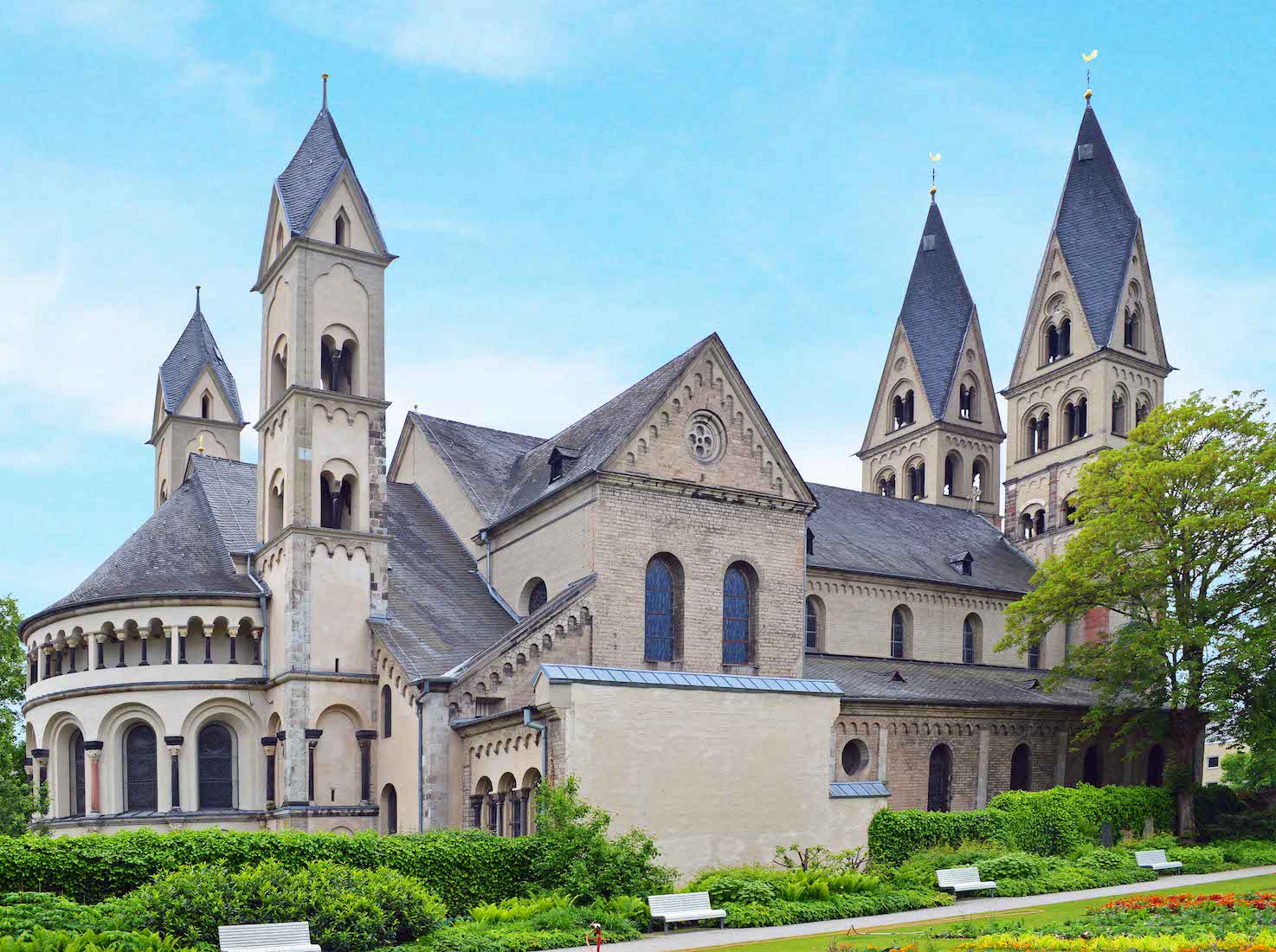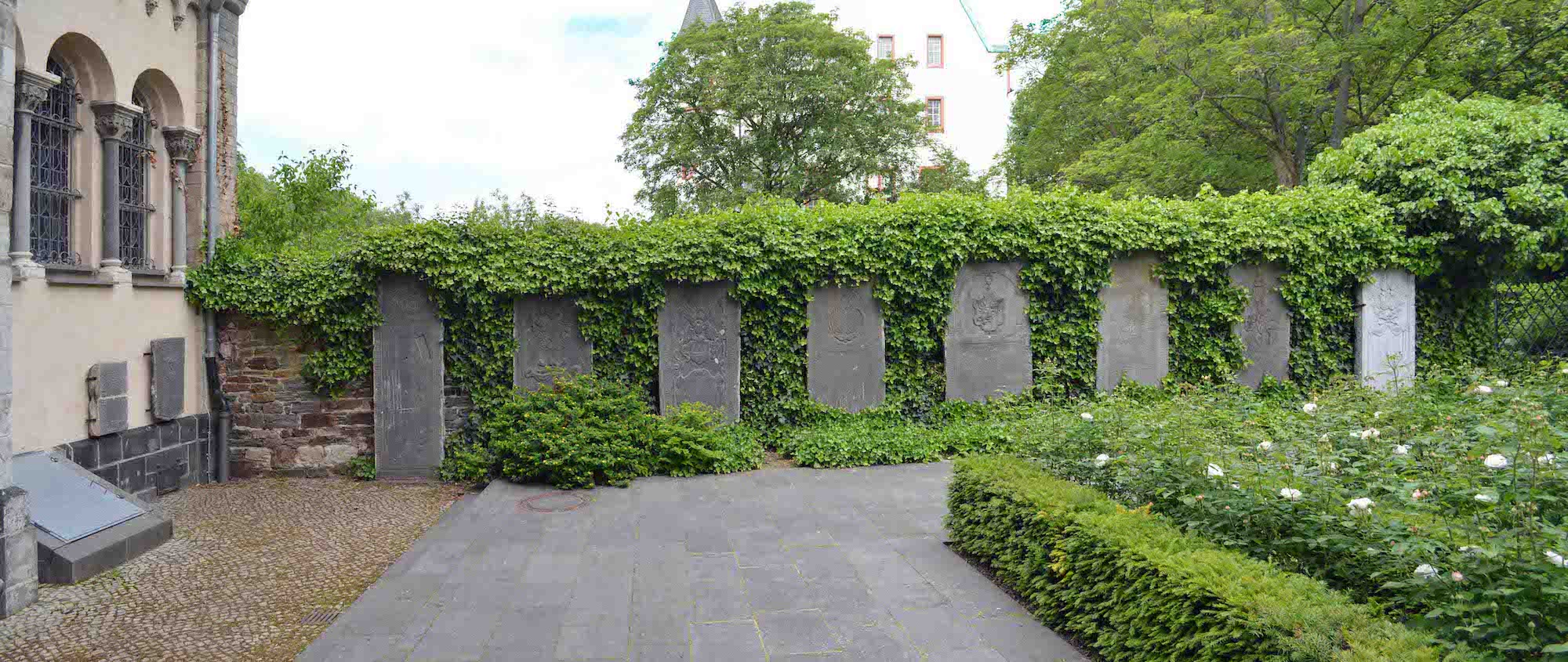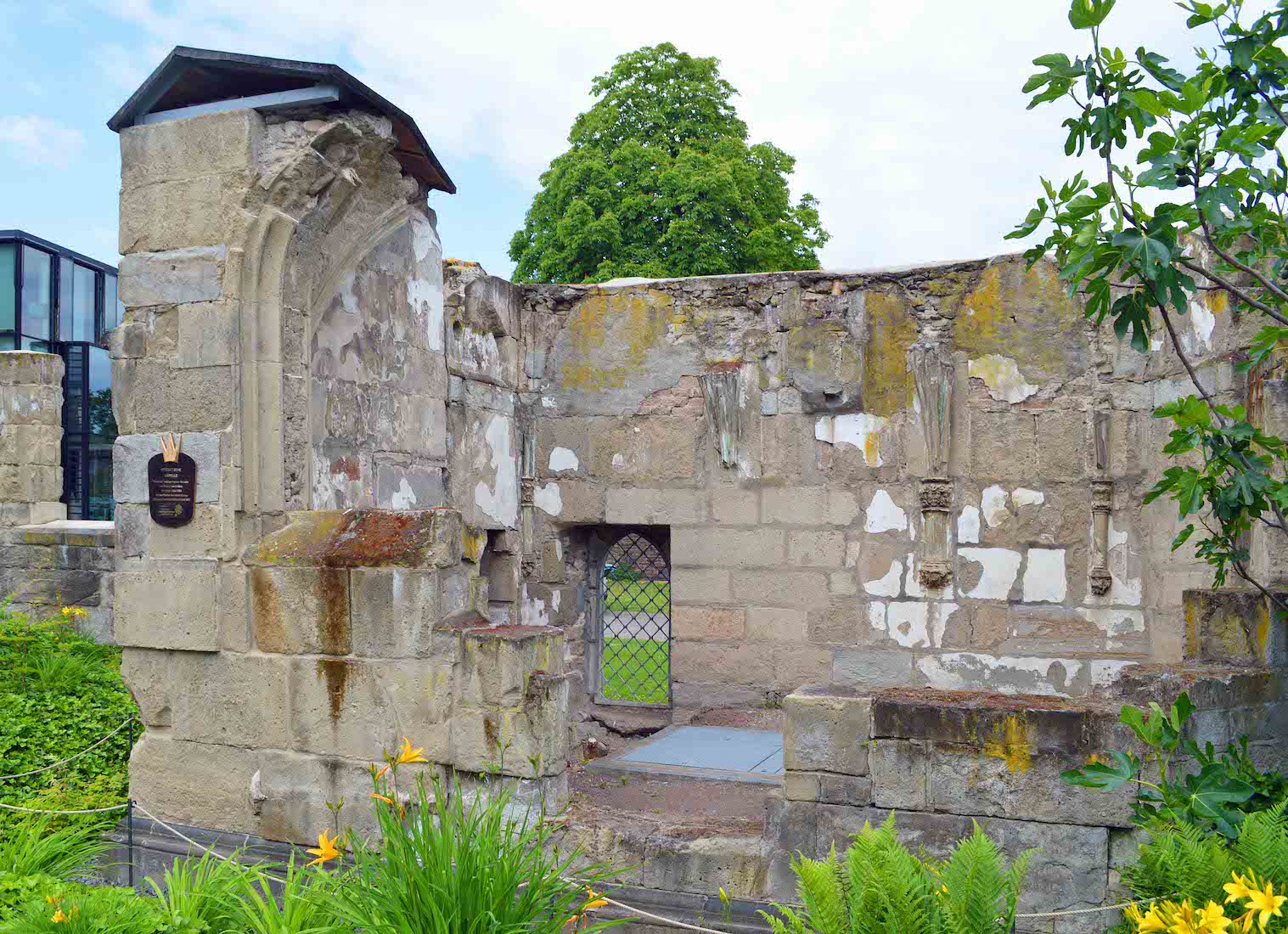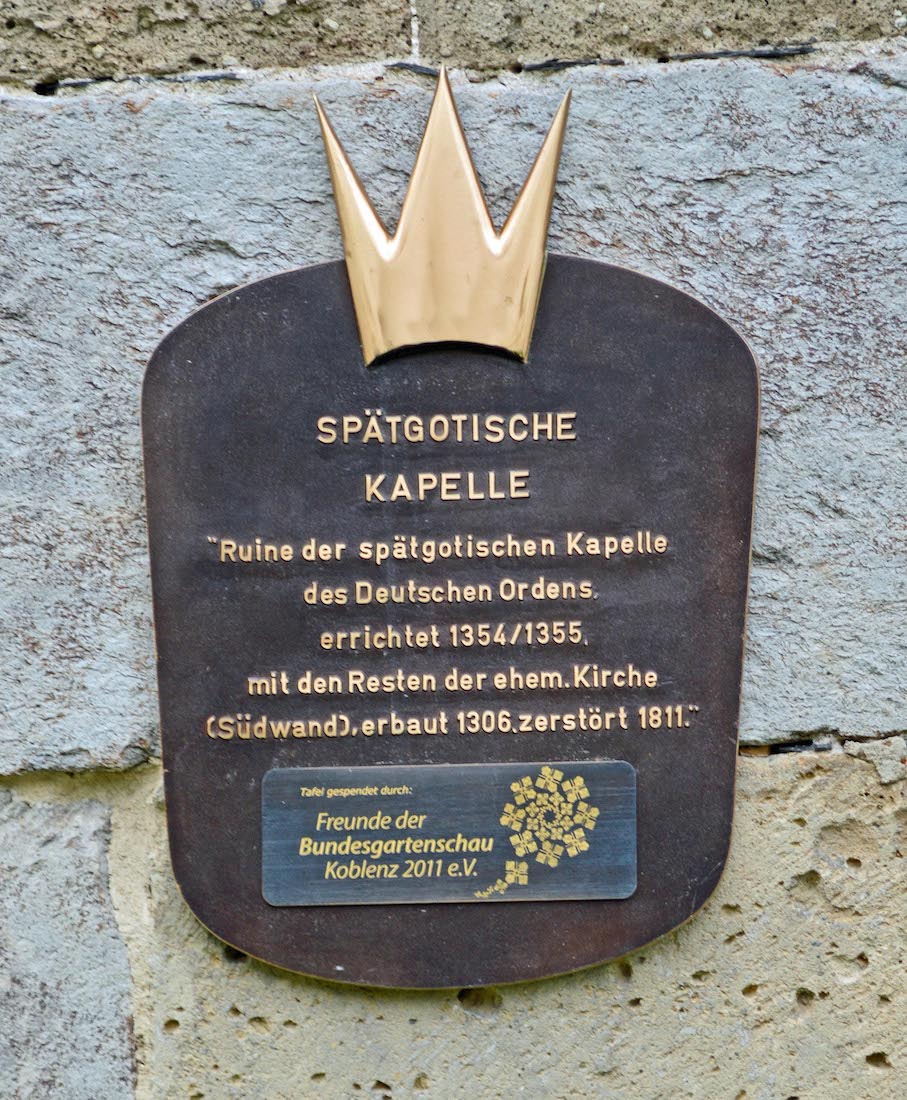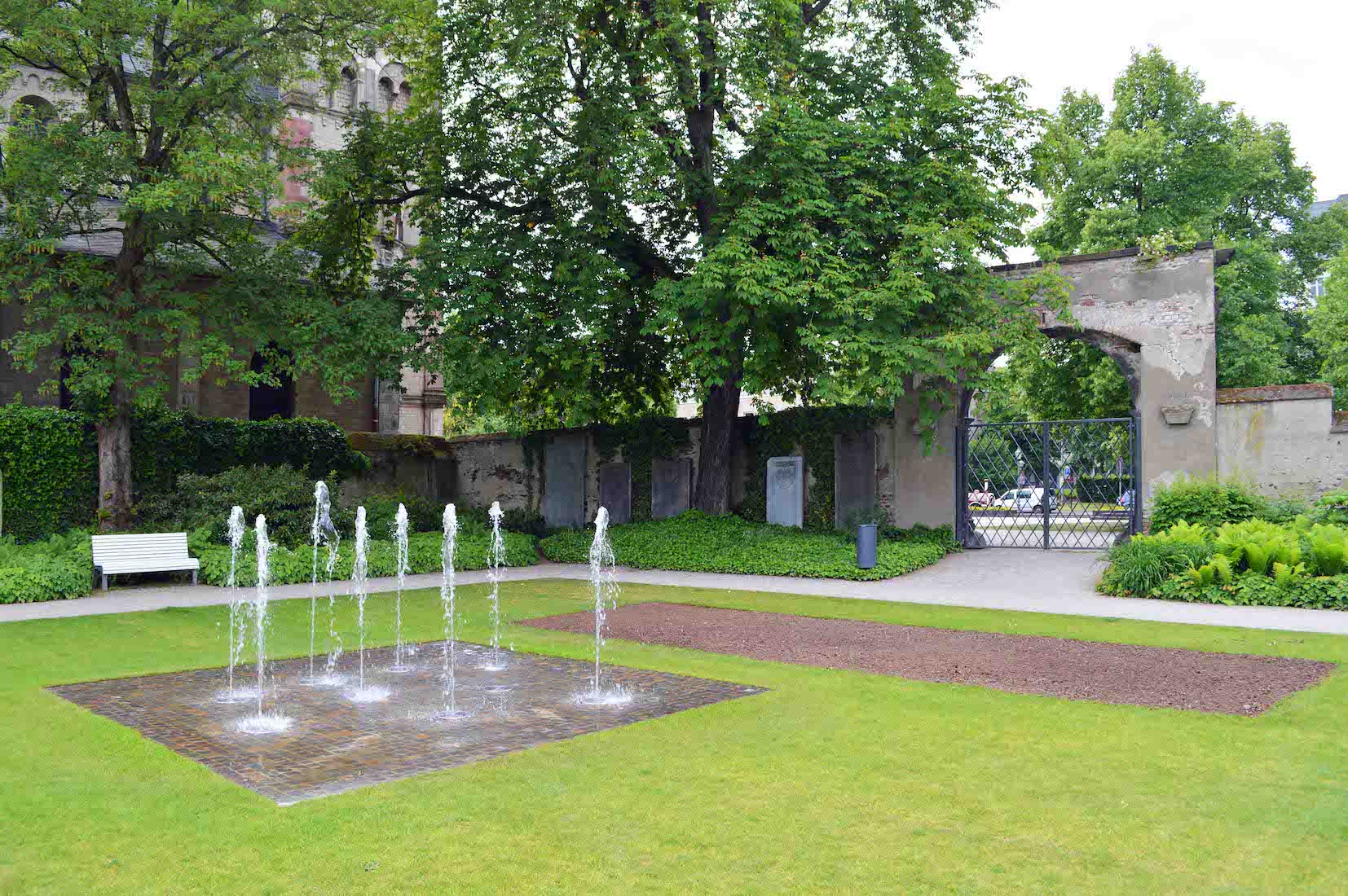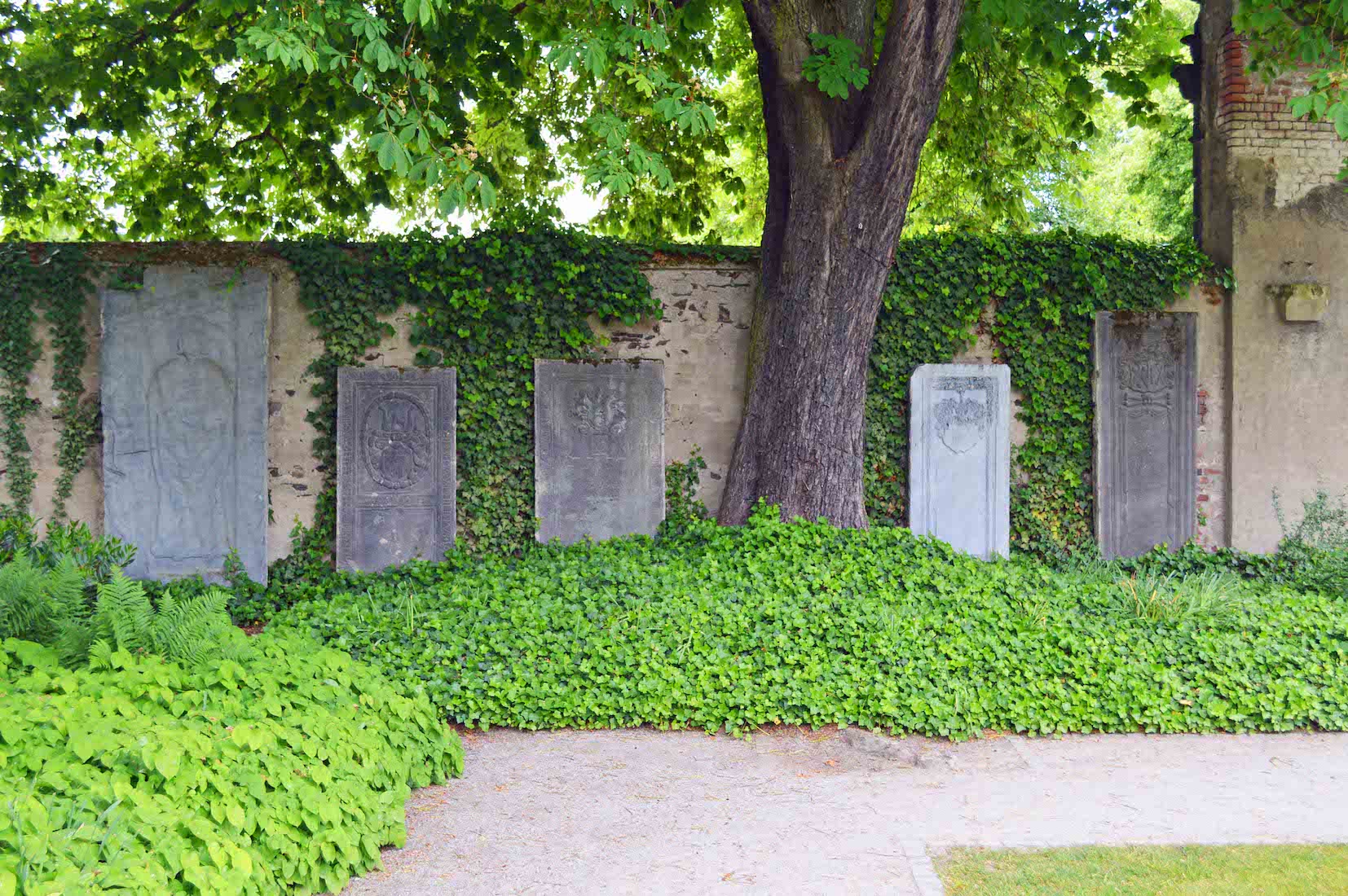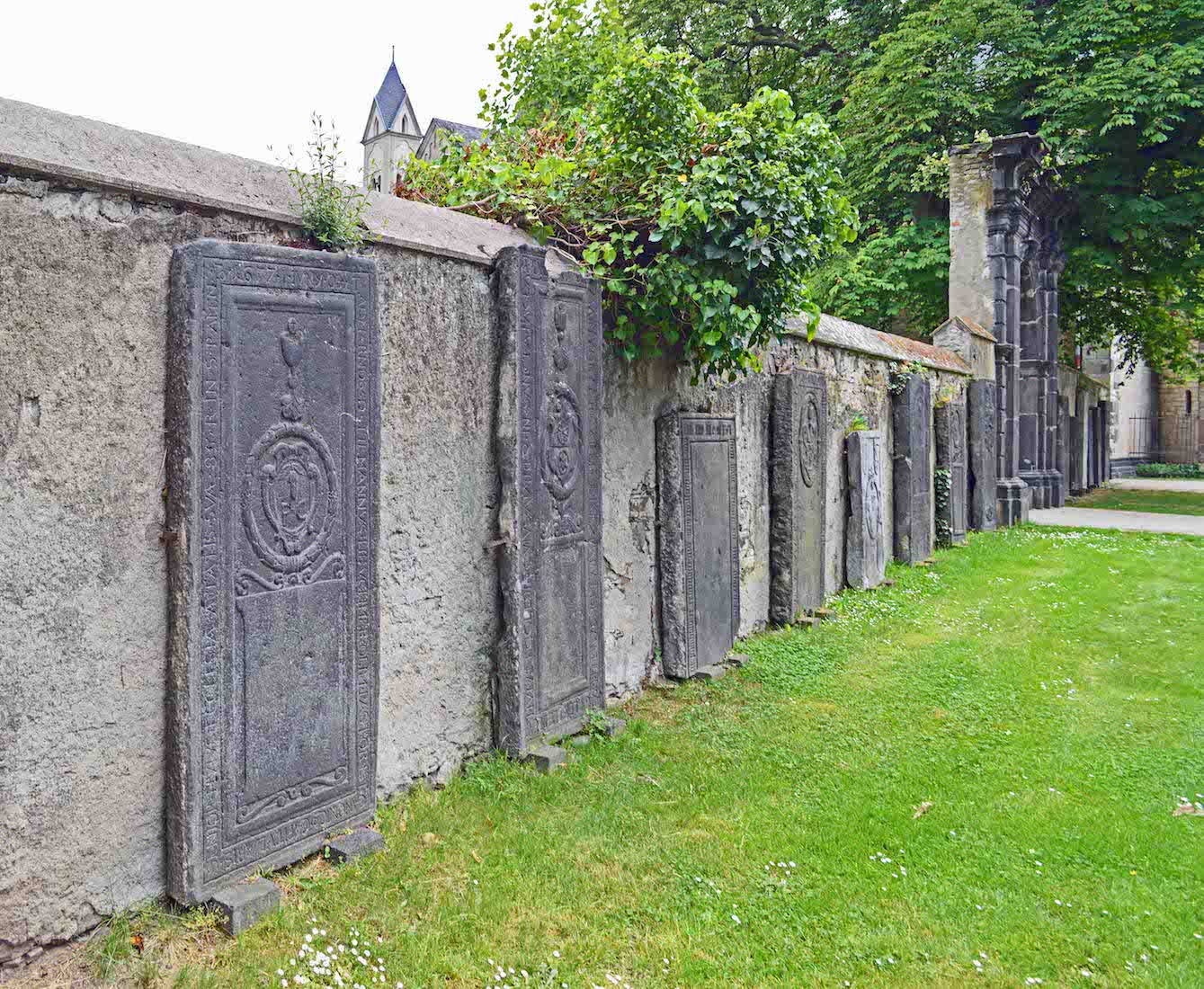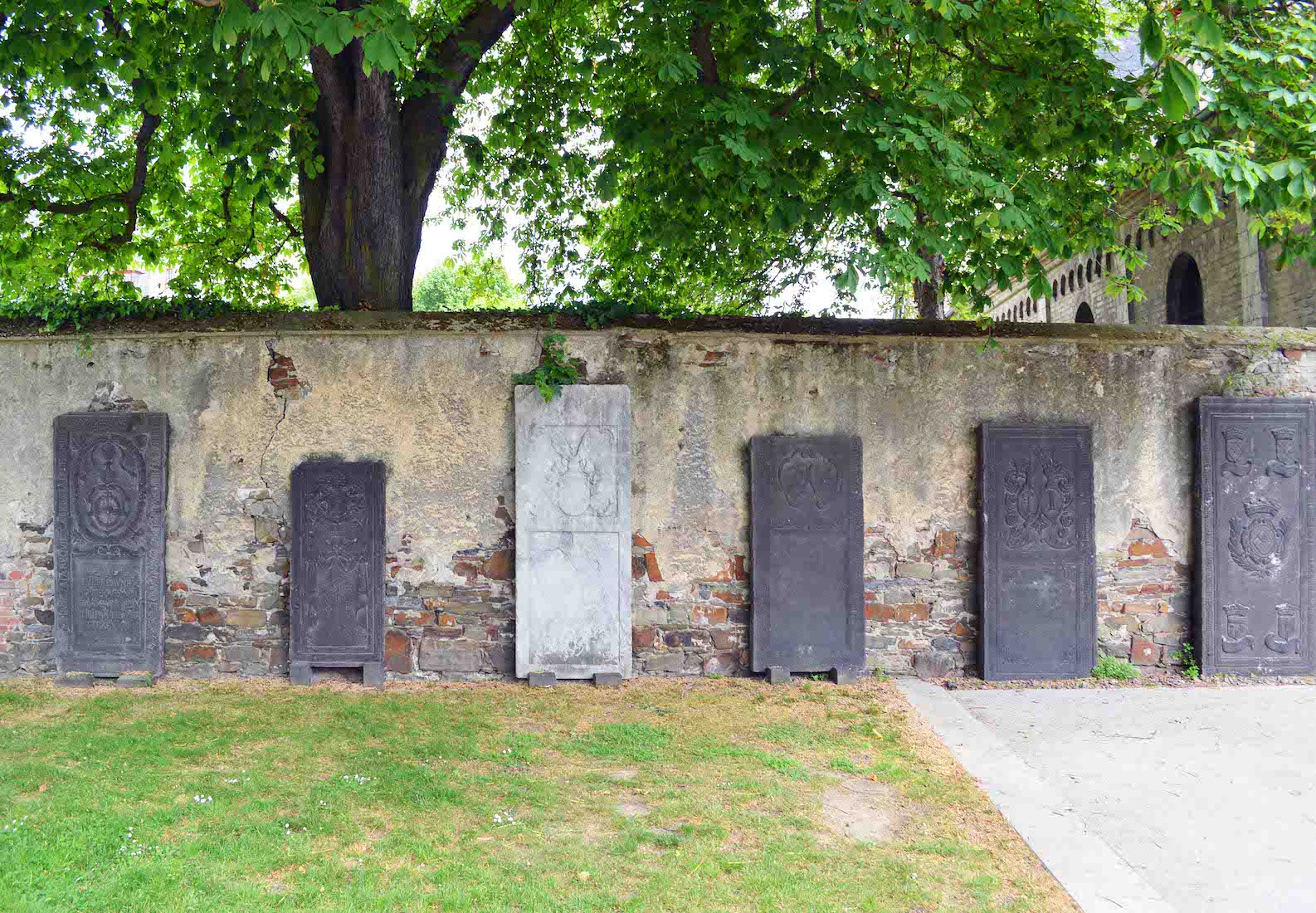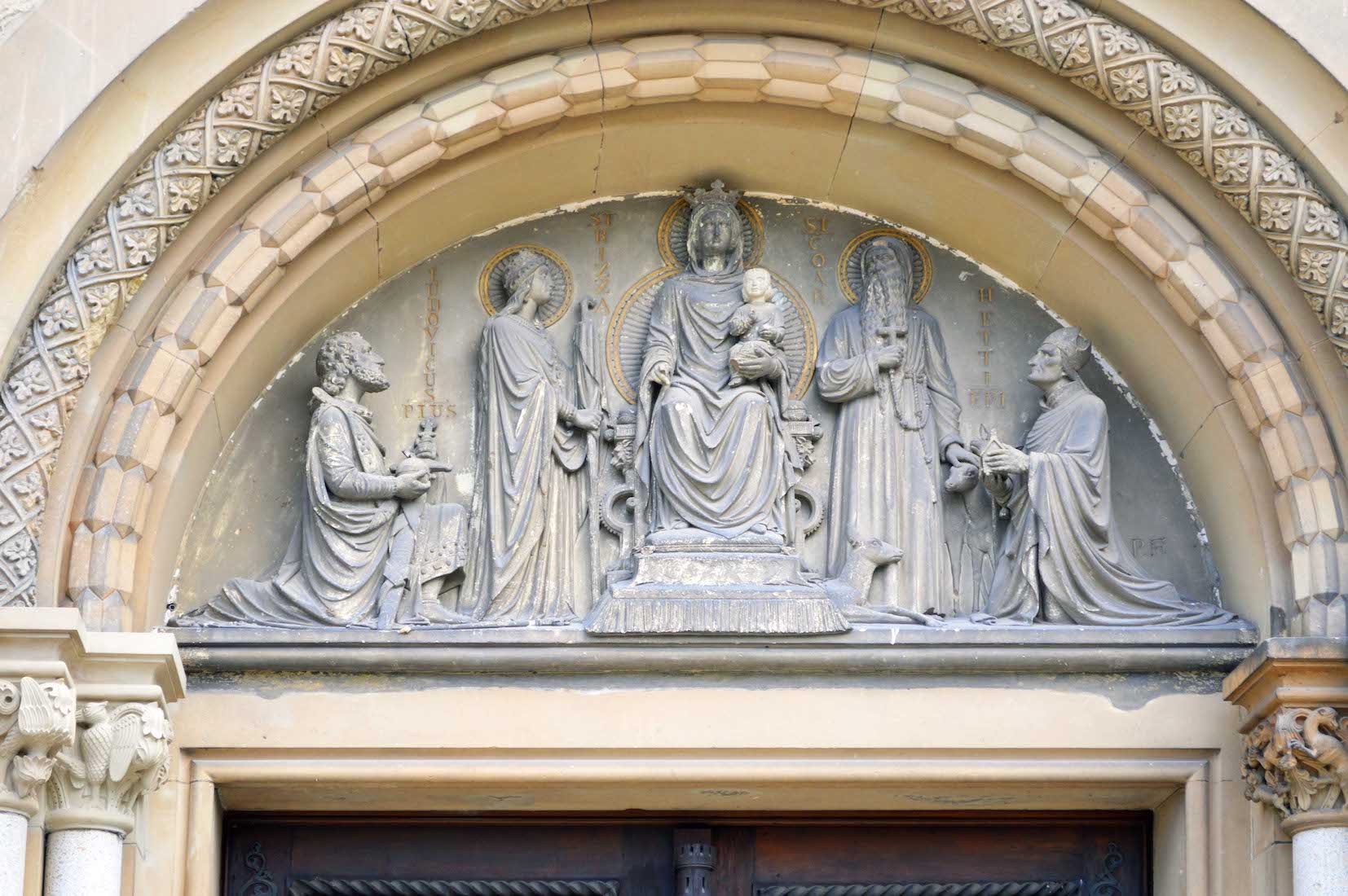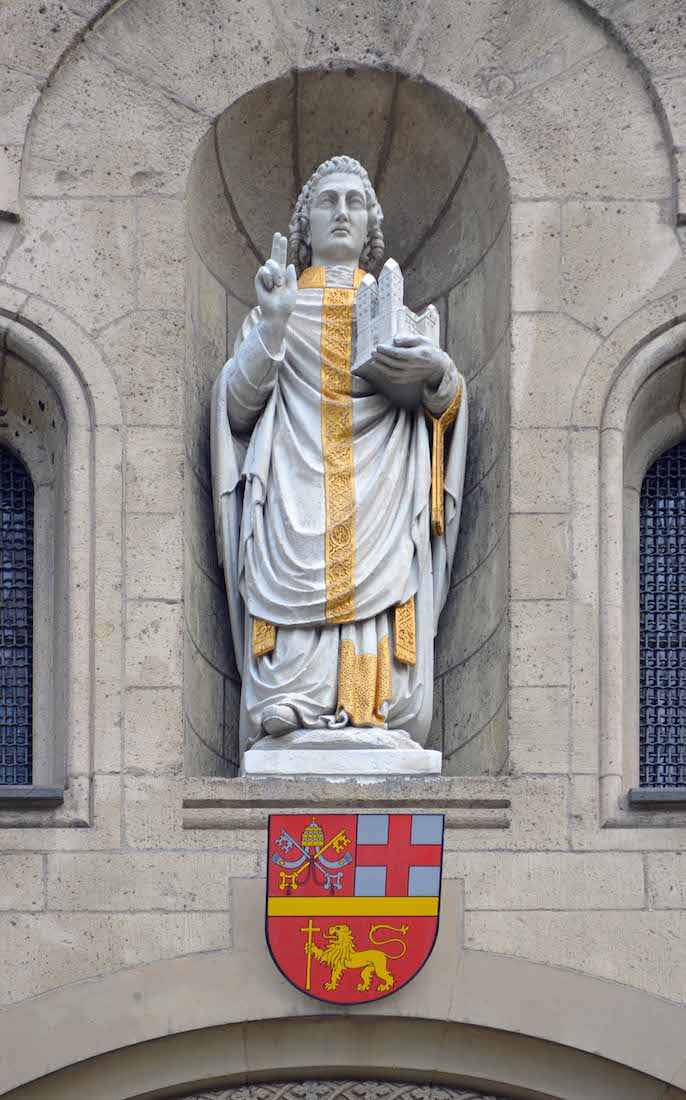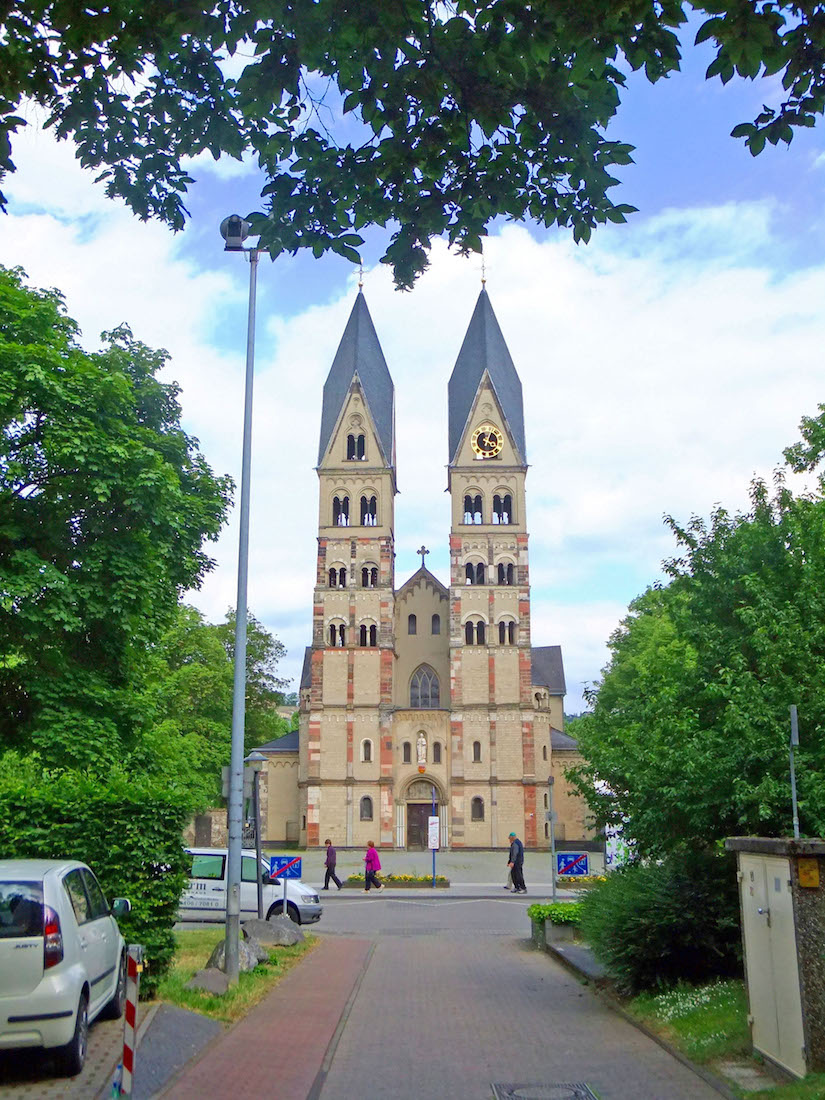
The Basilica of St Castor in Koblenz is a delightful old building. It lies almost exactly East-West with this Western face viewed across the paved Kastorhof. There are twin matching towers front and rear. A little Chapel of St Michael sits above the entry doors. PLAN
2. SATELLITE VIEW
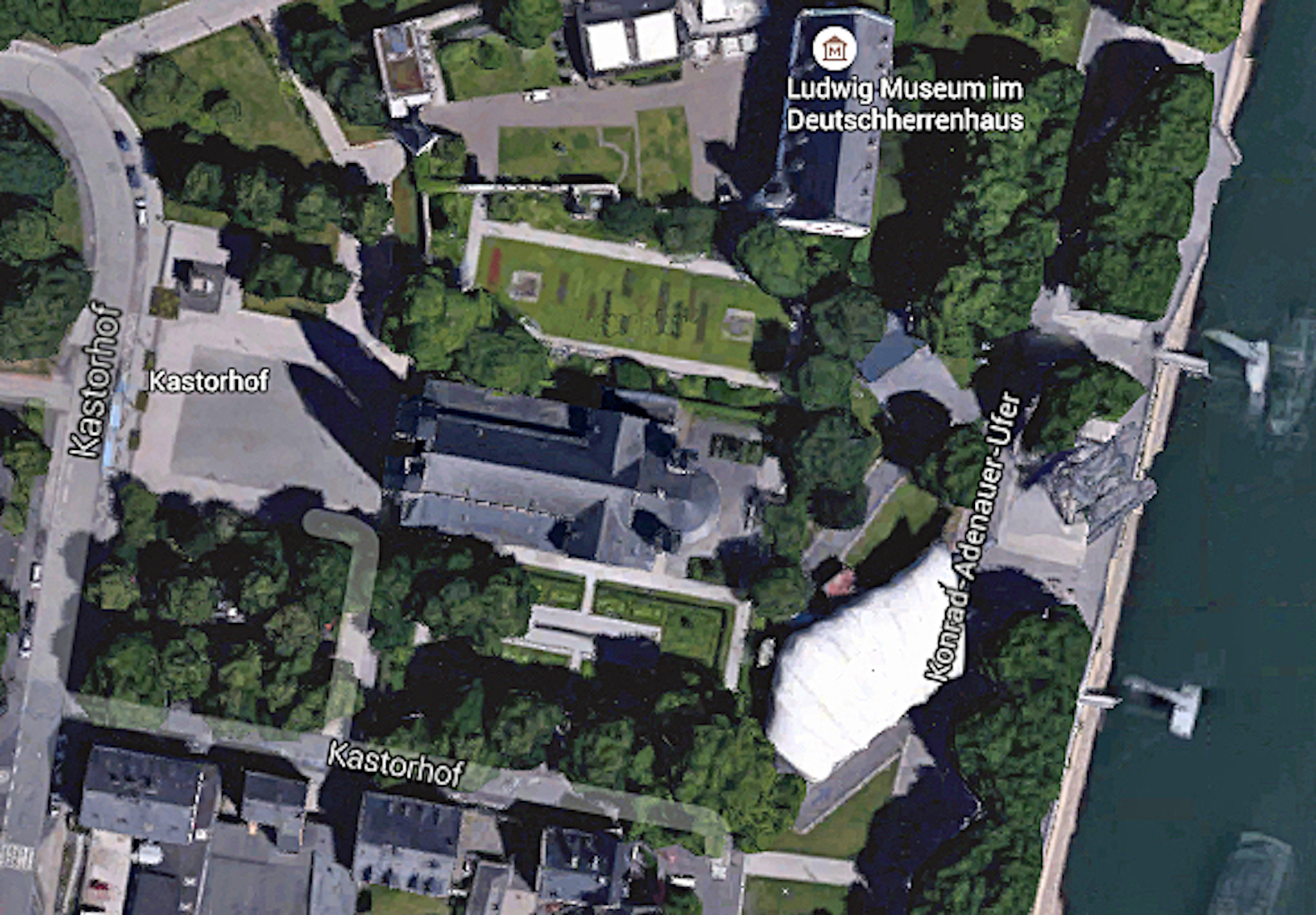
The Basilica is cruciform in shape with a rounded apse to the East. In fact, because of the covered nave aisles, the transepts are hardly noticeable from inside. The Basilica sits in lovely gardens with the Rhine flowing to the East.
3. WESTERN TOWERS
On 6 November 1944, St. Castor’s was damaged by a British air raid. In March 1945 the outer walls were also damaged by artillery. The stone material including the vault, however, remained largely intact. In 1948 enough money was raised for its reconstruction and a 25-year renovation began. Extensive renovation and restoration work was carried out on the towers in 1979 to 1990, and is visible here. Notice the little blue plaque at bottom right.
4. TOWER DETAILS
The steep gables of the rhomboid roof (rhombendach) on the Western towers were installed at the beginning of the 13th century. Only two simply structured pilasters in the basement of the Western towers date from the earlier Carolingian period. The church including the entrance hall is 58.25 m long and its overall width is 25.3 m. The towers are 44 m high, 6 m wide and 6.8 m deep.
5. BASILICA DETAILS
This plaque on the South West corner gives details of the building of the Basilica, starting from 817 – 836 under Archbishop Hetti of Trier, and concluding with reconstruction after World War II.
6. SOUTH WALL
We walk around the Basilica in an anti-clockwise direction. The Church honours St. Castor, who is said to have worked as a missionary on the Moselle in the 4th century and to have founded a religious community in Karden. Rizza, the alleged daughter of Louis the Pious, is venerated in the church as a saint of the city of Koblenz and her shrine still stands in the church.
7. SOUTH TRANSEPT
In 836 the church was ordained as a Carolingian hall with a rectangular chancel, but it was extended later in the 9th century with a transept and a semicircular apse. It had become part of the monastery of St. Castor, with its priest living a monastic life.
8. TRANSEPT AND APSE
The monastery of St. Castor became an important meeting place for emperors and kings and their descendants and a place where disputes between emperors and kings were negotiated and settled. Negotiations at the monastery in 862 led to territorial changes, which were part of the evolution of the Carolingian Empire into an Eastern and a Western Empire, from which the Holy Roman Empire (and eventually Germany and France) developed.
9. APSE
The choir, which was built around 1160, is a round, three-story apse flanked on both sides by a five-story tower. The third floor of the apse is a dwarf gallery with 21 arches. Some of the columns around the windows carry a lion as a symbol of Christ. Notice the colour variation in the columns separating the apse windows.
10. THUMBS UP!
The Northern aspect of the Basilica is very pleasing and obviously gets the ‘thumbs up’!
11. NORTHERN ASPECT
What an interesting building this is! The wall at the end of the North transept appears to be new. Pope John Paul II raised the status of St. Castor's to a Minor Basilica in 1991. This is a title given to a number of Roman Catholic churches. There are only four Major Basilicas – all in Rome.
12. NORTH GARDEN TOMBSTONES
The garden area to the North of the Basilica is very attractive. The overgrown Western wall is lined with old tombstones.
13. OLD RUINS
In a corner of the North garden stand the ruins of a Late Gothic Chapel.
14. CHAPEL RUINS PLAQUE
This little plaque tells us that the Gothic Chapel was built in 1354–1355, and destroyed in 1811. The German Order mentioned here is a religious community – the (legal) successor of the order of knights from the time of the Crusades. The Order currently has 1100 members, including 100 priests and 200 religious sisters who devote themselves primarily to charitable activities. The headquarters are located today in Vienna.
15. NORTHERN GARDENS
The central feature of the North gardens is a flat swathe of lawn with an attractive fountain.
16. TOMBSTONES
The march of the tombstones continues along this West wall of the gardens. There is a lot of history recorded here.
17. THE OUTER WEST WALL
The line of headstones continues on the other side of the West wall. Here they border a mowed grassy strip.
18. FINAL HEADSTONES
These old stones are difficult to identify, but someone must have catalogued the collection!
19. ABOVE THE WEST DOOR
The scene depicts the Virgin Mary with the baby Jesus. Gathered around (and labelled) are various people associated with the Basilica. From left these are Ludovicus Pius (Louis the Pious), St Rizza, St Goar, and Archbishop Hetti. Louis the Pious (778 – 840), also called the Fair, and the Debonaire, was a deeply religious man who was the King of Aquitaine from 781. He was also King of the Franks, and co-Emperor (as Louis I) with his father, Charlemagne, of the Holy Roman Empire from 813.
20. ST CASTOR
Also above the West door is a statue of St Castor holding a model of the Basilica. Saint Castor (German: Kastor) was a priest and hermit of the 4th century who is venerated as a saint by the Catholic Church. Castor was a pupil of Maximinus of Trier around 345 AD, and was ordained as a priest by Maximinus. At his ordination, Castor settled at Karden on the Moselle as a hermit with various companions, where he dedicated himself to an ascetic life and established a small religious community.


